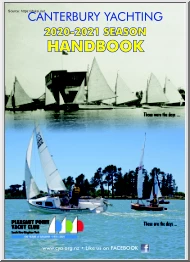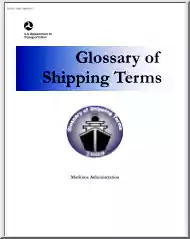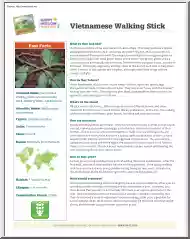No comments yet. You can be the first!
Content extract
1 Optimist Tuning Guide by 3FL SailDesign Made by 3fl Sail design with the help of Simone Ricci, Atlantis Academy and other coaches. Daniele Ricci +39 339 4943027 3flsail@gmail.com dan.ricci3@gmailcom Simone Ricci +39 340 3506427 simonericci.sail@gmailcom Diego Morani +39 348 5455308 diego3fl@gmail.com Follow us on Instagram and Facebook Optimist Tuning Guide 2 OUTHAUL The outhaul allows to drastically change the depth of the sail. Thanks to the shape of the last panel when you lose the outhaul the draft (position of max depth) moves backwards so the sail becomes more powerful. The sail has his natural draft quite forward, but if you play with the outhaul you can manage to move it. 1. No Hiking: Don’t tie the foot because you might move the dept too forward. The foot of the sail has to be almost completely straight between one eyelet and the other. You don’t need concavity between eyelets since the last panel is already deep enough. 2. Mid Hiking: The setting of the
sail depends on the wave and on how you press the boat. If you are a good hiker and there’s choppy wave you can give just a bit more tension than no hiking condition. If there’s no wave you can tie more, but careful to don’t flat the sail in the clew area (as in fig 2). 3. Full Hiking: Tie the outhaul, even completely if the wind is very strong. This way you can flat the sail and move the depth forward. LUFF Fig 1: outhaul setting in light wind. Deep sail and closed leech. Fig 2: Strong wind setting. The sail is very flat nearby the clew. 3FL sails have the position of the max depth a bit more forward than the others and the luff has a bit of pre tensioning. So if you have vertical wrinkle it means that the luff is really very tied and the max depth move too forward. Remember that the tension on the body of the sail is always less than the tension on the luff tape. 1. No Hiking: No tension on the luff in order to have the maximum power and good pointing. 2. Mid Hiking: As
for the outhaul it depends on waves and on helmsman strength. In any case if you want a good power you can still have a light tension on the luff, always keeping in mind that it is pretensioned. 3. Full hiking: In this condition you can give more tension on the luff in Fig 3: Eyelets numbers order to flat the sail and move forward the draft. Careful to don’t have vertical wrinkles!! Optimist Tuning Guide 3 SPRIT The shape of the leech is very extremized on this sail, it means that the upper batten is very exposed and it can move a lot on the wind gusts. It means that you can give tension on the leech with the sprit. If the throat point is not well tied or if the luff is too tied you will not be able to remove the sprit wrinkle. If you are too heavy for your model or if you don’t point enough you can try to lose a bit the sprit and lose the outhaul. When the wind is very strong and you’re not able to keep the boat flat you can lose a bit of sprit in order to open the
leech. Fig4: good sprit and luff setting for mid-wind condition. SAIL TIES The luff curve is made to follow the bending of the mast while sailing. The bending of the mast depends on the wind intensity and on the use of the main sheet, with the sail ties we can adapt the sail on the mast. Fig 5: loosed sprit in strong wind Light wind: The mast isn’t bended, so we have to remove a bit of luff curve. 8 3mm 5,6,7 2mm 4,3,2 1mm 1 0mm Mid wind (From mid to full hiking): This sail allows you to tie a lot of main sheet, that means a lot of mast bend. We don’t want to de-power the sail, so we have to set the ties considering that the mast bend itself de-power the sail. 8 1mm 5,6,7 3mm~5mm 2,3,4 3mm~5mm 1 0mm The range of the central ties depends on the stiffnes of your mast. Stiff mast 3mm, flexible mast 5mm Strong wind (over-power condition): This condition is when you are full hiking or even sheet out. If the luff curve follows the bending of the mast it means less
depth. Don’t care about the horizontal wrinkle, it means that the sail is losing depth. 8 0mm 5,6,7 0mm ~ 2mm 2,3,4 0mm ~ 2mm 1 0mm The range of central ties depends on how much depower you need. Sheet out 0mm, Full hiking 2mm Optimist Tuning Guide 4 MAIN SHEET Look at the tell-tale on the leech, you have to see it 50% of the time leeward and 50% of the time windward. This sail allows you to tie a lot of sheet without closing the leech, but pay attention because if you over-sheet you might reduce a lot the depth of the sail and you will have less power, if you try to tie a lot of sheet you can easily see it. Fig 6: Good shape of the leech Send us the picture of your sail, and a brief explanation of the condition so we can give you our feedback! Optimist Tuning Guide
sail depends on the wave and on how you press the boat. If you are a good hiker and there’s choppy wave you can give just a bit more tension than no hiking condition. If there’s no wave you can tie more, but careful to don’t flat the sail in the clew area (as in fig 2). 3. Full Hiking: Tie the outhaul, even completely if the wind is very strong. This way you can flat the sail and move the depth forward. LUFF Fig 1: outhaul setting in light wind. Deep sail and closed leech. Fig 2: Strong wind setting. The sail is very flat nearby the clew. 3FL sails have the position of the max depth a bit more forward than the others and the luff has a bit of pre tensioning. So if you have vertical wrinkle it means that the luff is really very tied and the max depth move too forward. Remember that the tension on the body of the sail is always less than the tension on the luff tape. 1. No Hiking: No tension on the luff in order to have the maximum power and good pointing. 2. Mid Hiking: As
for the outhaul it depends on waves and on helmsman strength. In any case if you want a good power you can still have a light tension on the luff, always keeping in mind that it is pretensioned. 3. Full hiking: In this condition you can give more tension on the luff in Fig 3: Eyelets numbers order to flat the sail and move forward the draft. Careful to don’t have vertical wrinkles!! Optimist Tuning Guide 3 SPRIT The shape of the leech is very extremized on this sail, it means that the upper batten is very exposed and it can move a lot on the wind gusts. It means that you can give tension on the leech with the sprit. If the throat point is not well tied or if the luff is too tied you will not be able to remove the sprit wrinkle. If you are too heavy for your model or if you don’t point enough you can try to lose a bit the sprit and lose the outhaul. When the wind is very strong and you’re not able to keep the boat flat you can lose a bit of sprit in order to open the
leech. Fig4: good sprit and luff setting for mid-wind condition. SAIL TIES The luff curve is made to follow the bending of the mast while sailing. The bending of the mast depends on the wind intensity and on the use of the main sheet, with the sail ties we can adapt the sail on the mast. Fig 5: loosed sprit in strong wind Light wind: The mast isn’t bended, so we have to remove a bit of luff curve. 8 3mm 5,6,7 2mm 4,3,2 1mm 1 0mm Mid wind (From mid to full hiking): This sail allows you to tie a lot of main sheet, that means a lot of mast bend. We don’t want to de-power the sail, so we have to set the ties considering that the mast bend itself de-power the sail. 8 1mm 5,6,7 3mm~5mm 2,3,4 3mm~5mm 1 0mm The range of the central ties depends on the stiffnes of your mast. Stiff mast 3mm, flexible mast 5mm Strong wind (over-power condition): This condition is when you are full hiking or even sheet out. If the luff curve follows the bending of the mast it means less
depth. Don’t care about the horizontal wrinkle, it means that the sail is losing depth. 8 0mm 5,6,7 0mm ~ 2mm 2,3,4 0mm ~ 2mm 1 0mm The range of central ties depends on how much depower you need. Sheet out 0mm, Full hiking 2mm Optimist Tuning Guide 4 MAIN SHEET Look at the tell-tale on the leech, you have to see it 50% of the time leeward and 50% of the time windward. This sail allows you to tie a lot of sheet without closing the leech, but pay attention because if you over-sheet you might reduce a lot the depth of the sail and you will have less power, if you try to tie a lot of sheet you can easily see it. Fig 6: Good shape of the leech Send us the picture of your sail, and a brief explanation of the condition so we can give you our feedback! Optimist Tuning Guide




 When reading, most of us just let a story wash over us, getting lost in the world of the book rather than paying attention to the individual elements of the plot or writing. However, in English class, our teachers ask us to look at the mechanics of the writing.
When reading, most of us just let a story wash over us, getting lost in the world of the book rather than paying attention to the individual elements of the plot or writing. However, in English class, our teachers ask us to look at the mechanics of the writing.